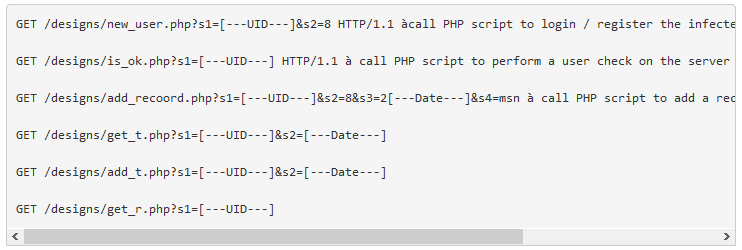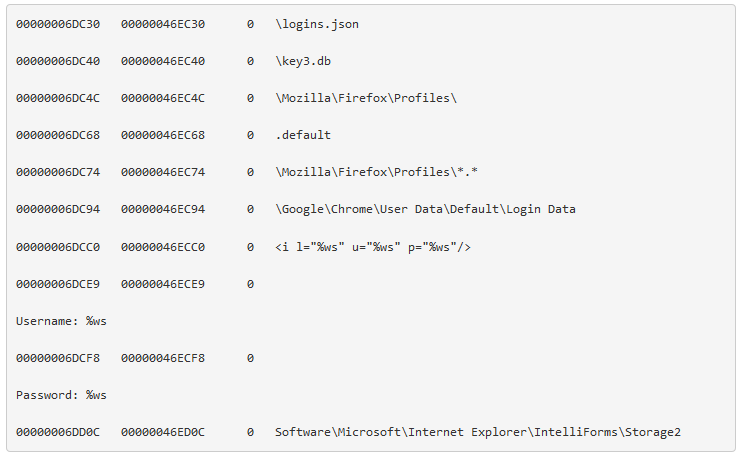Earlier this year, researchers published analyses of targeted attack known as Operation Arid Viper [1] (aka Desert Falcons [2], aka DHS) directed primarily at organizations in the Middle East. Delivering a backdoor and spyware, this campaign was designed to steal information from infected systems using a malware client capable of filtering out “uninteresting” files, and spread primarily via a targeted phishing email usually promising a pornographic video.
The infection chain described in the initial analyses was fairly straightforward: To access the video content, the recipient had to open an attached RAR archive file – or less frequently, click a link to a RAR – that extracted an SCR (Windows screensaver) file, which in turn drops two files: a malicious EXE with the name of a legitimate file (such as “skype.exe”), and a video format file, usually FLV or MPG.
Despite the apparent severity and extent of this threat, little has been written about it in the intervening months, and the operation appeared to be dormant. However, Proofpoint researchers recently intercepted and analyzed phishing emails distributing Arid Viper malware payloads with some noteworthy updates.
As with the originally documented examples, these messages were part of narrow campaigns targeting specific industry verticals: telecoms, high tech, and business services, primarily in Israel.
In these samples, the spear-phishing email contained a link to a RAR file hosted on MediaFire – no attachments were observed. Instead of a pornographic video, the actors showed a change in TTP by using as lure a video of a fiery automobile accident.
התאונה בכביש // Road accident
וידיו מזעזע דלפ תקשורת // And his shocking leaked to the media
Clicking the linked RAR brings up a prompt to download the file “this.morning.rar” to their computer.




- A non-malicious video file: this.morning.flv (41bf348254b921bbd21350a70f843683)
- The malware payload: chrome.exe (2ae0f580728c43b3a3888dfbe76ad689)


The following is an example of the initial C2 beacon :




The Trojan continues to exhibit its behavior of downloading an update following the first C2 communication, and in this case Proofpoint researchers succeeded in patching the initial malware to obtain the second stage malware payload (3a401a679d147b070eb8ccae5df3dc43), which allowed us to observe more activities.
Previously described as the Operation Arid Viper backdoor, the second stage payload was observed in traffic to be obfuscated with standard base64-encoding. The second-stage backdoor has a compile date prior to the first stage malware by nearly a day.














The Arid Viper backdoor encrypts data to be exfiltrated in order to avoid detection, and after additional analysis Proofpoint researchers succeeded in determining its encryption routine.
Data Exfiltration
The updated data exfiltration of the new Arid Viper backdoor functions similarly to previously documented versions. The table below lists some of the different functionalities paired with the actor-assigned indicator, which can be seen in both the HTTP client body along with exfiltrated data as well as in the URI once exfiltration is complete.




To generate the key/IV pair, first the malware randomly generates 60 bytes of data. From this, the first 32-bytes are used for the key, the next byte is skipped, and the following 16 bytes are used for the IV. After encryption, the key, separator byte, IV, leftover bytes and padding are then encoded into a 512-byte block of data and prepended to the encrypted data. The encoded key/IV and encrypted data are then base64-encoded using the same modified alphabet. Just like in the older version, this data is then appended to the final variable in the POST’s HTTP client body and sent to an attacker-controlled server.
Reinventing the wheel
Numerous examples over the years have served to remind us that designing your own cryptography implementation is difficult and usually ill-advised. The authors of the updated Arid Viper backdoor seem to have overlooked this lesson for, although certain measures have been taken to protect the generated secret keys and IVs, their implementation is susceptible to a brute force attack, often capable of finding the correct key/IV combination in less than one second. Cracking the encryption scheme applied to the traffic in Figure 4 reveals the following decrypted cleartext.


Conclusion
In summary, this update to Operation Arid Viper demonstrates that despite its relatively low profile since February the Arid Viper / Desert Falcons threat still has teeth and remains a risk for organizations in Israel and elsewhere. While the overall attack profile observed in recent examples remains similar to the originally documented campaigns, the recent campaigns exhibit several important updates:
- Use of links instead of attachments
- New lures: still using pornographic video but most recent detections also included lures for auto accident footage
- New executable name: originally reported using “skype.exe” (and variations on “skype”), the recent samples used “chrome.exe”
- New C2 domains
- Added encryption for exfiltrated data
The return of Operation Arid Viper shows that targeted attacks can remain a threat even – and especially – when they are no longer in the headlines.
References
Indicators of Compromise (IOCs)
Observed C2 domains and IP addresses:
- smilydesign [.] com / 195.154.252.2
- yalladesign [.] net / 173.236.89.19
- oowdesign [.] com / 195.154.133.228
- coldydesign [.] com / 195.154.252.2
Attachment and payload hashes for this sample :
- this.morning.rar – cd89897a2b6946a332354e0609c0b8b4
- this.morning.exe – 2ae0f580728c43b3a3888dfbe76ad689
- RtlUpd.exe – 3a401a679d147b070eb8ccae5df3dc43
Attachment and payload hashes for all campaigns observed since July 1 :
- 8dc2cef74f9e577b431ad3569c894dc07c8c429ef04235936587ac0e70e2993c
- d3c184840805a280895387bf321a15a3dfc6af28314983c535e332cbcee7faf0
- 9cd995095d351b31512fc8866f21bc90624306408a6552879a7dc9317848d877
- e6e65932473a14d2d104c11234a391fc68c6874f06054a7a019facf5da9498a8
- f05e913be22eebb19143886b75ca59842d9ce6cf355c23375aa80fdbccad3ec0
- 343674e2b89e6e786ba08718e0672f3ff21a826c6a4e6e4f41dbd5af3157031d
- c21891edf9a88953fe49c2aa24ed51e093004a865269ac88a5f3fc149762bd2b
- 658f63baa9dd4fcc031114ea579e3423d19cb81128a5c577cc5ad10c669b950f
- 1710997941193e52e6251638cf80e8ea6a520624f5ebe4583f974252cb8d4881
- 94f0f5f4849632fd68cce11f6247bb90e426842aa8aee8974f5b0abea2a85748
- 16c687fdb35ec21482b5b07aee274fdc4fc8c5c0928cb5de441c5b3e84ba98ad
- ff73aa398636a01595d4762a925e1e1b976f85306663c22e7200db74c093f27e
- 56a3ee282a25fbb234651fe3771574056576aa68e25e05587c5a443ddd0f59fc
- d7de32c9ab9265d1dd900688c91d3468e05f88f98bd67bbd883450db44df045e
- 39fc67689c28a31183a7e1d499e8a4bfeb06fc629cf567c1b6c245edb6564d16
- 1f3b4ceea2e3054162260bb827a5c867d5615b15c68e065d97a99a892d5cad4e
- 109d248b9dabb019e4d2d82552c63d84ab14e931af40c6f3a09a3df3a40212f2
- 03eff13ea629acfff6416d95f674195b4fbaa158914e8f9d5ac1f5e094a60fae
Files and paths indicating infection :
- C:\Program Files\Realtek\AudRT.dll
- C:\Program Files\Realtek\AudRTx32.dll
- C:\Program Files\Realtek\AudRTx86.dll
- C:\Program Files\Realtek\cn.dll
- C:\Program Files\Realtek\ffmencrypt_secret.key
- C:\Program Files\Realtek\ffmUntitled
- C:\Program Files\Realtek\ffsk
- C:\Program Files\Realtek\ffsk1
- C:\Program Files\Realtek\files
- C:\Program Files\Realtek\flfiles
- C:\Program Files\Realtek\fmencrypt_secret.key
- C:\Program Files\Realtek\fmUntitled
- C:\Program Files\Realtek\fsk
- C:\Program Files\Realtek\fsk1
- C:\Program Files\Realtek\gfile
- C:\Program Files\Realtek\gmencrypt_secret.key
- C:\Program Files\Realtek\gmUntitled
- C:\Program Files\Realtek\gsk
- C:\Program Files\Realtek\gsk1
- C:\Program Files\Realtek\IM.dll
- C:\Program Files\Realtek\imencrypt_secret.key
- C:\Program Files\Realtek\ImRt.dll
- C:\Program Files\Realtek\ImRtx86.dll
- C:\Program Files\Realtek\imUntitled
- C:\Program Files\Realtek\isk
- C:\Program Files\Realtek\isk1
- C:\Program Files\Realtek\lmencrypt_secret.key
- C:\Program Files\Realtek\lmUntitled
- C:\Program Files\Realtek\lsk
- C:\Program Files\Realtek\lsk1
- C:\Program Files\Realtek\mmencrypt_secret.key
- C:\Program Files\Realtek\mmUntitled
- C:\Program Files\Realtek\msk
- C:\Program Files\Realtek\msk1
- C:\Program Files\Realtek\Realtek.dll
- C:\Program Files\Realtek\rfiles
- C:\Program Files\Realtek\rfmencrypt_secret.key
- C:\Program Files\Realtek\rfmUntitled
- C:\Program Files\Realtek\rfsk
- C:\Program Files\Realtek\rfsk1
- C:\Program Files\Realtek\RRTM.dll
- C:\Program Files\Realtek\RRTM.dllm
- C:\Program Files\Realtek\Rt.inf
- C:\Program Files\Realtek\Rtd.ini
- C:\Program Files\Realtek\Rtf.dll
- C:\Program Files\Realtek\Rtf32.dll
- C:\Program Files\Realtek\Rtf64.dll
- C:\Program Files\Realtek\Rtg.dll
- C:\Program Files\Realtek\Rtgx32.dll
- C:\Program Files\Realtek\Rtgx64.dll
- C:\Program Files\Realtek\Rtled.tmp
- C:\Program Files\Realtek\Rtlupd.conf
- C:\Program Files\Realtek\RTlx32.dll
- C:\Program Files\Realtek\RTlx64.dll
- C:\Program Files\Realtek\RTlx86.dll
- C:\Program Files\Realtek\RTM.dll
- C:\Program Files\Realtek\Rtrfl
- C:\Program Files\Realtek\Rttr.dlt
- C:\Program Files\Realtek\Rttr.zip
- C:\Program Files\Realtek\tmencrypt_secret.key
- C:\Program Files\Realtek\tmUntitled
- C:\Program Files\Realtek\tsk1
- C:\Program Files\Realtek0.txt
- C:\Program Files\Realtek\REF\OK
Detection
The following Yara rule can detect the updated Arid Viper backdoor traffic :
rule AVIDVIPER_APT_BACKDOOR {
meta:
author = “Proofpoint Staff”
info = “avid viper update”
strings:
$s1 = “ABCDEFGHIJKLMNOPQRSTUVWXYZabcdefghijklmnopqrstuvwxyz0123456789-/”
$s2 = “SELECT * FROM Win32_DiskDrive” wide ascii
$s3 = “Software\\Microsoft\\Windows\\CurrentVersion\\Run” wide ascii
$s4 = “\\dd\\vctools\\vc7libs\\ship\\atlmfc” wide ascii
condition:
$s4 and 2 of ($s1,$s2,$s3)
}
In addition, Proofpoint Emerging Threats (ET) has a variety of signatures for detecting older and updated versions of Arid Viper and Desert Falcons.
Arid Viper :
- ET Open signatures: 2020431-2020454
- ET Pro signatures: 2812701, 2812729
Desert Falcon :
- ET Open: 2020459, 2020461, 2020462, 2020464-2020469, 2020472
[su_box title=”About Proofpoint” style=”noise” box_color=”#336588″]







